By Robert Tate, Automotive Historian and Researcher
Images Courtesy of RoadTrack.com, Mrs. Mildred Overton, Todd Gould, Lafayette (Indiana) Journal and Courier
Published 2.10.2021
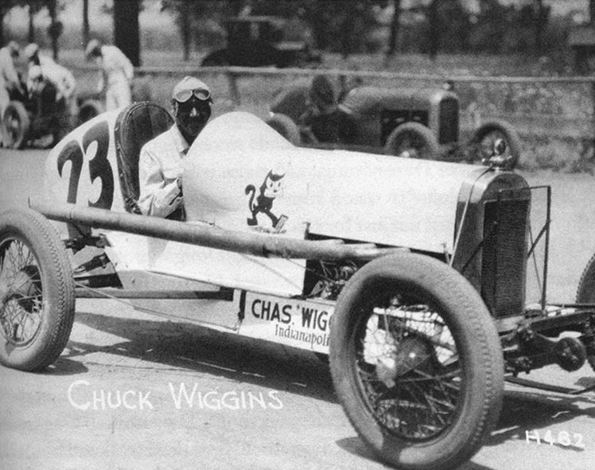
As many Americans celebrate February as Black History Month, I would like to honor Charlie Wiggins, who was one of the first African American race car drivers during the 1920s and 1930s. He was born on July 15,1897 in Evansville, Indiana and would later become known as “The Negro Speed King.”
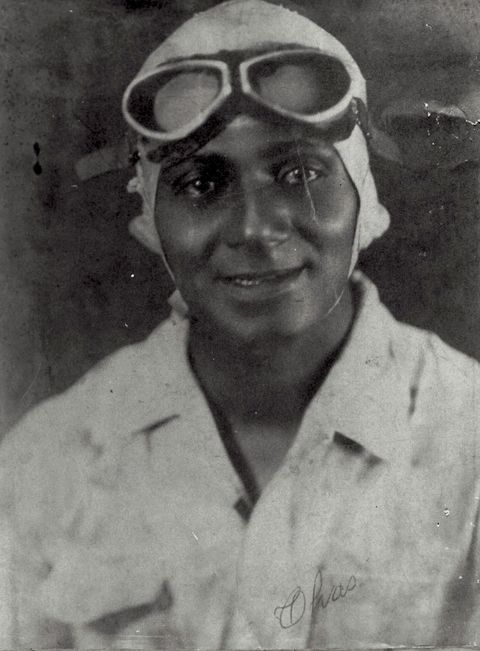 Charlie Wiggins (Roadtrack.com)
Charlie Wiggins (Roadtrack.com)
Wiggins was a highly skilled mechanic and was considered one of the best. He worked with some of the best race car drivers in his area. He started working as a mechanic for an automotive repair shop in Evansville, Indiana in 1917 called Benninghof-Nolan Garage. Wiggins, was the first African American mechanic in Evansville, and later became Benninghof’s chief mechanic.
After getting married in 1922, Wiggins would move his family to Indianapolis. He answered an advertisement for a head mechanic position at the repair shop of Louis W. Sagalowsky, located on Merrill Street downtown just south of the Circle Monument.
In 1924, Wiggins would open his own automotive repair shop and became the most successful mechanic in the area. As a talented mechanic and automotive enthusiast, he would imagine himself competing in the nation’s top auto racing events. In 1923, Sagalowsky had recommended he start his auto repair shop and begin building his own race car.
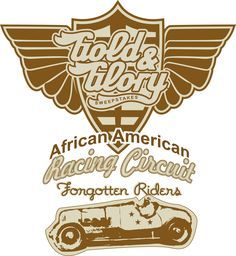 Gold and Glory African American Forgotten Riders (Charlie Wiggins Estate)
Gold and Glory African American Forgotten Riders (Charlie Wiggins Estate)
During the early days of auto racing, events were segregated, so the Colored Speedway Association was created by William Rucker in Indianapolis to give African American drivers their own place to race. The dirt track barnstorming circuit would attract thousands of spectators from the Black community to races around the country. The Indianapolis race was called the “Gold and Glory” Sweepstakes and originally slated to be held on Emancipation Day, April 16. Auto historian Douglas Madden wrote: “Rucker and the organizers moved the race to Independence Day, July 4, to give the race a patriotic air mirroring the Indy 500 Memorial Day scheduling.”
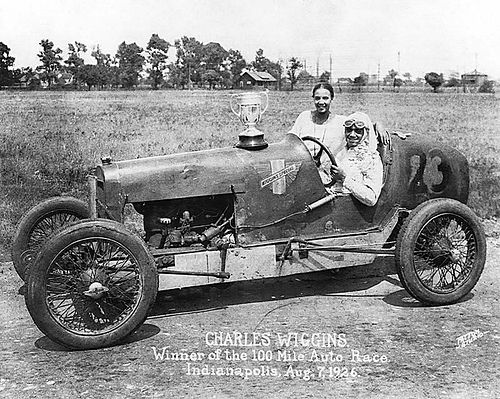 Wiggins wins a 100 mile race (Mrs Mildred Overton)
Wiggins wins a 100 mile race (Mrs Mildred Overton)
Wiggins wrote his own chapter in automotive racing, winning the Colored Speedway Association’s “Gold and Glory” sweepstakes races four times between 1926 and 1935, including three straight from 1931-1933, earning him the unofficial title “The Negro Speed King.”
 Book cover from For Gold and Glory by Todd Gould (courtesy of the author)
Book cover from For Gold and Glory by Todd Gould (courtesy of the author)
During the 1936 “Gold and Glory” race, 13 cars were involved in a large wreck, and Wiggins’ car overturned, pinning his legs under the vehicle. Before he could be removed from the vehicle, he was struck by another driver. Unfortunately, Wiggins’ injuries brought his racing career to an end. While he could no longer compete, he continued to operate his Indianapolis garage until his death in 1979.
 Newspaper article from the Lafayette Indiana Journal and Courier
Newspaper article from the Lafayette Indiana Journal and Courier
In conclusion, the Indiana Racing Memorial Association dedicated a historical marker in 2018 to Charlie Wiggins that stands in front of Evansville’s African American Museum. Wiggins’ greatness will always be remembered, and he is a role model for many generations to come.
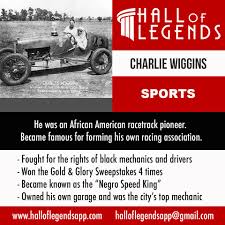 Hall of Legends Charlie Wiggins
Hall of Legends Charlie Wiggins
Bibliography
Gould, Todd. “For Gold & Glory: Charlie Wiggins and the African American Racing Car Circuit.” Indiana University Press, 2002.
Madder, Douglas. “Charlie Wiggins: the Jackie Robinson of American Motorsports.” Automotive History Motorsports, June 9, 2020.



